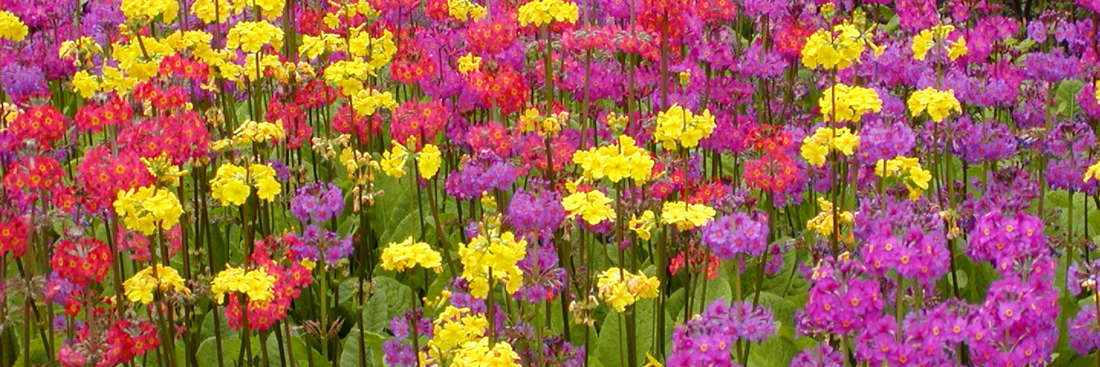Flowers are a universal symbolic language. Throughout history, flowers have been used to convey meaning. And they are a beautiful way to express love, happiness, gratitude, encouragement or sympathy.
The meaning of colours in flowers
A little colour knowledge can go a long way, and the same flower can have different meanings, depending on its colour. Whether you want to send a loved one a meaningful bouquet, or simply an arrangement in their favourite colour, the colours you choose can send a beautiful message as well.
In this article we help you understand the meaning of colours in flowers that you choose. And understanding this can give depth and charm to your choice!
Red flowers

Look around on Valentine’s Day and it seems pretty clear that red flowers express love. But red blooms do more than that. They can also mean respect and courage.
- Red roses, tulips and chrysanthemums traditionally mean passionate, romantic love.
- Red carnations commonly mean love, affection and admiration.
- Red gerberas are said to symbolise being fully immersed in and surrounded by love.
Pink flowers

‘Red adjacent’ pink flowers are a popular choice for many reasons, often because it’s someone’s favourite colour! But like all flower colours, pink blooms also carry certain meanings.
- Pink roses and tulips represent platonic love, gratitude and admiration. They are a lovely choice to show appreciation, such as for teachers, colleagues or friends.
- Pink orchids and chrysanthemums are symbolic of femininity and grace.
- Pink carnations are a Flower Farm favourite. Associated with gratitude and thankfulness, they make the perfect bouquet to send your appreciation. They’re also popular for Mothers’ Day, as they can represent a mother’s undying love.
- Pink lilies are symbolic of support, encouragement and ambition, making them ideal for someone going for a job interview or sitting for exams.
Orange flowers

The colour orange symbolises optimism, energy and positivity. Orange flowers are vibrant and bold, and suggest excitement and enthusiasm.
- Orange roses symbolise desire and enthusiasm.
- Orange gerberas send a message that a person is the ‘sunshine’ in your life. A bright seasonal bunch would be a lovely way to say this.
- Clivias symbolise happiness and abundance.
Yellow

Yellow has long been associated with happiness, hope and spontaneity. With yellow flowers, there is a significant variation in meaning. Let’s look first at ‘happy’ associations with yellow flowers.
- Yellow roses, tulips and gerberas traditionally mean friendship and happiness. They let your loved ones know you care.
- Yellow lilies symbolise happiness, good health and encouragement. They’re a perfect choice to send to someone recovering in hospital or at home.
- The iconic yellow wattle symbolises resilience.
- And perhaps the most iconic of all yellow flowers, the sunflower, means loyalty and adoration.
The ‘less happy’ connotations of yellow flowers include:
- Yellow carnations are said to mean rejection or disappointment, so have historically been sent as a ‘breaking up’ flower.
- Yellow chrysanthemums are traditionally associated with sorrow and unrequited love.
Green flowers

In the natural world, green represents new beginnings, growth, renewal and abundance. Green flowers aren’t especially common in Australia, where ‘greenery’ suggest plants and foliage. But should you wish to send a message of good luck or good health, green flowers are an excellent choice:
- Green carnations and chrysanthemums symbolise good fortune and good health.
- Green cymbidium orchids are said to represent good health, longevity, prosperity and strength.
Blue flowers

Blue is the colour traditionally associated with trust, loyalty, calm, stability and wisdom. It’s also the rarest of all flower colours, making blue flowers a less common floral choice.
- Blue delphiniums are said to symbolise cheerfulness, encouragement and goodwill. They’re a birth month flower for those born in July.
- Hydrangeas produce blue flowers when the soil is acidic. They traditionally symbolise gratitude, beauty, abundance and grace.
- Cornflowers have been said to represent fidelity and reliability.
Purple flowers

The colour purple suggests royalty, success, admiration and devotion. Purple flowers can be a wonderful choice to send a meaningful bouquet to someone you respect and admire.
- Purple irises symbolise wisdom and adoration, making them an excellent alternative choice to roses to send on Valentine’s Day.
- Purple orchids and tulips symbolise royalty and admiration.
And don’t forget, white flowers

White flowers are a favourite at The Flower Farm, so we wanted to include them in our rainbow of flower colour meanings. White suggests purity and innocence, which carries across to white flowers.
- White roses symbolise purity, remembrance and new beginnings.
- White carnations and gerberas symbolise pure love, such as a mother’s love. This makes them a wonderful choice for Mothers’ Day flowers.
- White tulips are sent to express sympathy, respect, and forgiveness.
- White lilies are a commonly sent flower to express sympathy as their meaning of purity and innocence is a sign of respect for the departed soul.
At the Flower Farm we have blooms of every colour and hue!
No matter the occasion or chosen colour, at The Flower Farm, we have blooms to express your feelings to a loved one each day of the year. Get in touch for a bespoke bouquet or we can help you to choose the perfect flowers for whatever meaning you wish to convey.


